As you probably already know, 3D scanning is an extremely useful technology that allows people to “copy” complex, existing objects from the real world. They only need to walk around the object with a scanner.
3D scanners are quite common nowadays, and many smartphones are equipped with special cameras and sensors that can make amazing scans. Yet, another area where 3D scanners have proven useful is in conjunction with Microsoft’s Xbox devices.
The Xbox Kinect is an older scanning device that was designed to let the player use hand gestures to control their corresponding video game consoles. It was quickly discovered, however, that their real-time, depth-sensing, and object tracking capabilities were ideal for making real-time 3D scans of indoor scenes and 3D objects. Yet, to produce a 3D image, you’ll need not only a scanner but also a program.
There are many different scanning programs out there and in this article, we’ll go over a few of the best ones that support the Kinect – which now exists in three different versions: the v1, the v2, and the Azure. But first, let’s consider what makes a good 3D scanning program.
Accommodating the Kinect
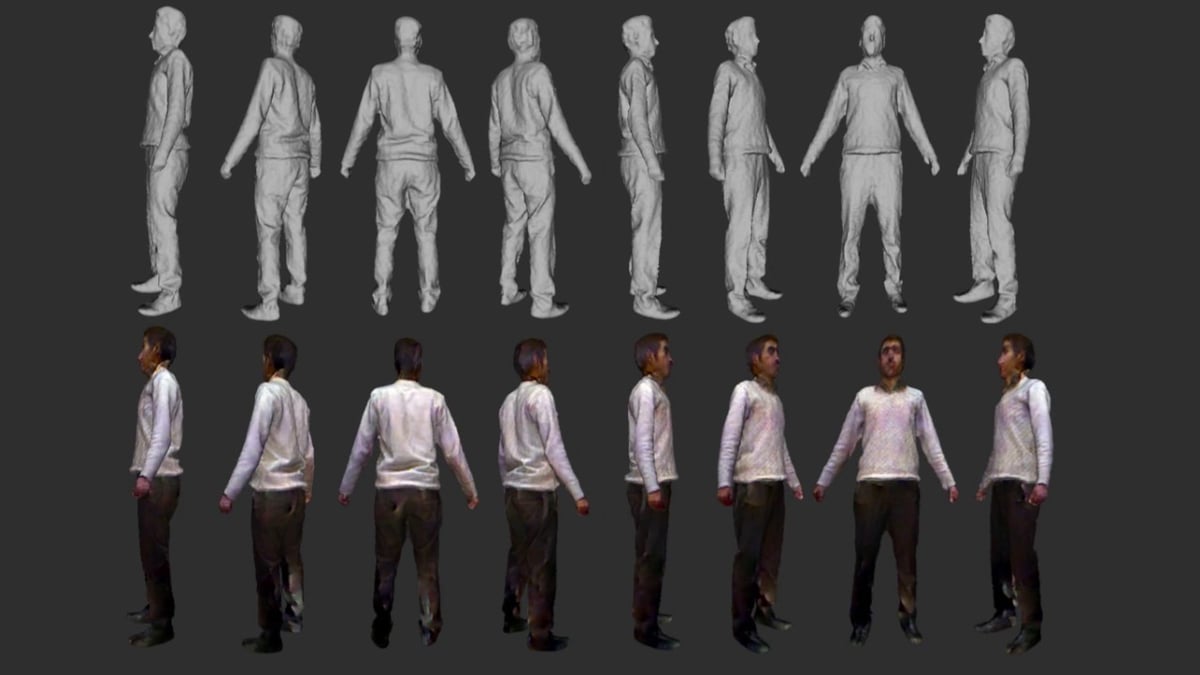
Software for the Kinects has come and gone over the years. The first Kinect was released for the Xbox in 2010, but 3D scanning software for it didn’t arrive until around 2013 when Skanect (developed by Occipital) and Shapify (by Shapify.me) were both released. Some of the software from those days is no longer supported, either by their respective companies or communities, so the full list of available software has been trimmed back to remove those without support.
History aside, there are a few considerations that software must or should have before you might consider using it with your Kinect. In this article, we considered the following:
- Scan quality: There are many factors that contribute to a quality scan, including the number of polygons created in the model, lighting, and the power of your CPU or GPU. In order to properly compare various programs, we assume near-perfect conditions, such as good lighting and sufficiently powerful hardware.
- Ease of use: How easy is it to achieve a scan using the software? Some applications guide you through the process while others have a non-intuitive workflow. The more intuitive, the higher the rating.
- Cost: Is it free? If not, what does it cost?
- Support and community: Are the software and the workflow actively supported by the company and community? What options are there when it comes to instructions, tutorials, and tips?
- Computer requirements: What does it take to achieve a good scan using the minimum requirements of the software? In general, unless the result is worth it, it’s nice when the requirements aren’t too demanding.
3D Scan
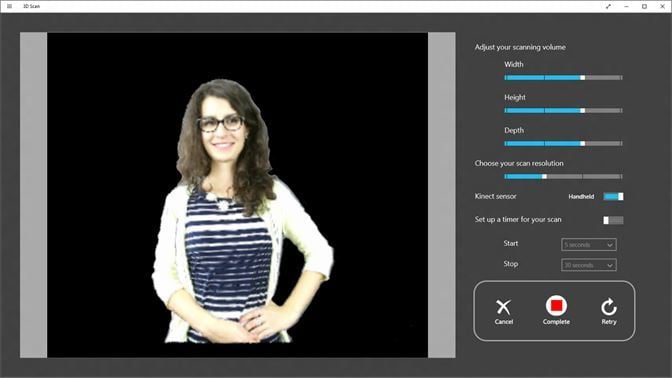
Microsoft saw this market take off and they had to jump in, so they created 3D Scan, 3D Builder, and 3D Viewer to capitalize on the opportunity. The software used to work with both the Kinects v1 and v2, but Microsoft dropped support for the v1 after it went out of production. Still, there are many v1 Kinects on the market, so this solution may cost you a little more unless you already have a v2.
The software is available, along with all the drivers, on the Windows Store. There’s also a good deal of documentation to support it, making this a relatively easy solution to get up and going. The workflow is very straightforward and the scan quality is good. The support from Microsoft and from the community of users is active and there are many tutorials on the net, so getting help or advice is easy.
- Scan quality: Good
- Ease of use: Good
- Cost: Free
- Support: Very good, although Microsoft removed support for the V1 Kinect
- Computer requirements: Medium
- Kinect version supported: v2
Skanect

Occipital has been in this space since the Kinect was first used as a 3D scanning solution, and it remains an active player. It even added many more scanners to the list of those that work with Skanect, and the first (but not the second) version of the Kinect still works.
Skanect comes in two versions. The free version, which performs just as well as the $149 version, is limited to 5,000 export polygons, which has a pretty big impact on the quality of most models. Indeed, many users claim that the limited polygon version looked worse than with other software.
Built into the software is a scan workflow that’s easy and intuitive. You just follow along, setting your scan size and scanning the object. It even has good post-processing tools that will help you fix areas that didn’t scan correctly, including stray points, which almost every scan has. The software also offers helpful feedback as you scan, indicating which points it’s unable to read or is having trouble with.
The software doesn’t require a GPU, using the CPU instead, although you’ll be adding time to any post-processing tasks. After you scan and post-process, you can export to the OBJ, PLY, STL, or VRML formats, but here’s where the limitation of the free version really bites.
Skanect has great support. Both the company and an active community are writing tutorials to help you get started and continue on your 3D scanning journey.
- Scan quality:
- Free version: Good (but limited)
- Paid version: Excellent
- Ease of use: Excellent
- Cost: Free (for the limited version) or $129
- Support: Excellent
- Computer requirements: Low
- Kinect version supported: v1
Shapify
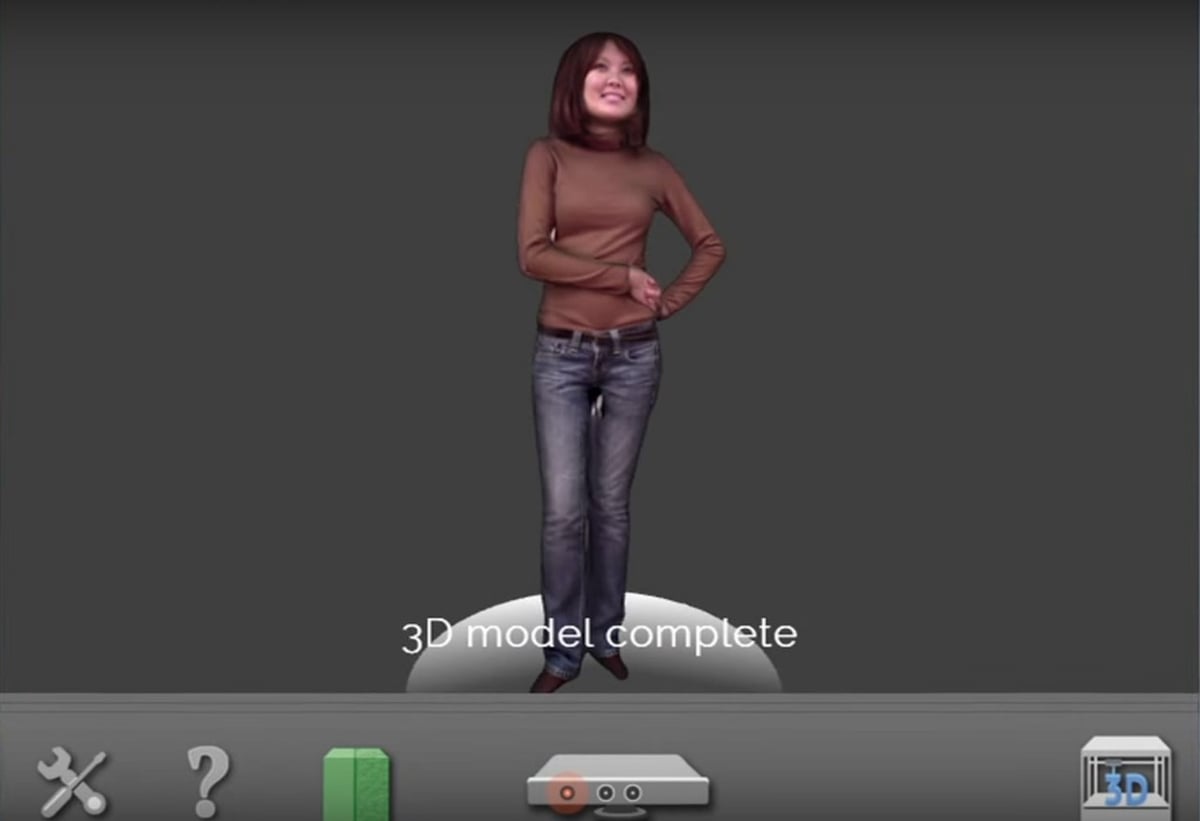
When you first look at Artec 3D’s Shapify, you’ll probably find these great-looking “mini-me” prints. In fact, using Shapify, you can scan yourself and upload the model to Artec 3D, after which they’ll print it and send it back to you, in color! Indeed, one of the reasons they look so great is that the scans themselves include color. The scan quality is already quite good, even with the Kinect v1, but this option makes Shapify even more attractive.
The software is commonly used commercially in worldwide walk-in scanning locations, where people can go to get themselves scanned and have their own mini-me printed on the spot.
The last software update was in 2014, so there isn’t a ton of support on the scanning side. This is also why the software only supports the v1. Since Artec 3D’s focus seems to be more on the commercial side, there also isn’t very much support within the community.
- Scan quality: Very good
- Ease of use: Excellent
- Cost: Free
- Support: Poor
- Computer requirements: Low
- Kinect version supported: v1
ReconstructMe
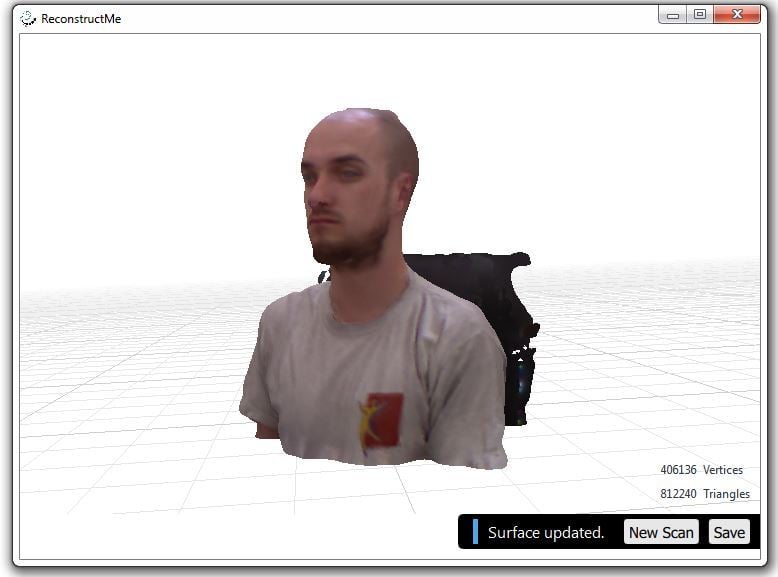
ReconstructMe offers a free version of their software if you use it in a non-commercial manner. The software can definitely be used with the Kinect v1, with v1 compatibility reportedly being possible only through utilizing the SDK.
The workflow is a bit more complicated than with other tools, which means a steep learning curve; but there is some power under the hood if you’re willing to learn. After scanning, you get a decent model that’s a bit coarser than other examples. Export file types include PLY, STL, and OBJ.
ReconstructMe’s website looks a bit dated and doesn’t seem to be maintained on a regular basis, making company support suspect if you were to need assistance. The minimum OS requirements list Windows XP… Well, enough said.
- Scan quality: Very good
- Ease of use: Okay
- Cost: Free
- Support: Poor
- Computer requirements: Low
- Kinect versions supported: v1, v2 (utilizing the SDK)
Scene Capture
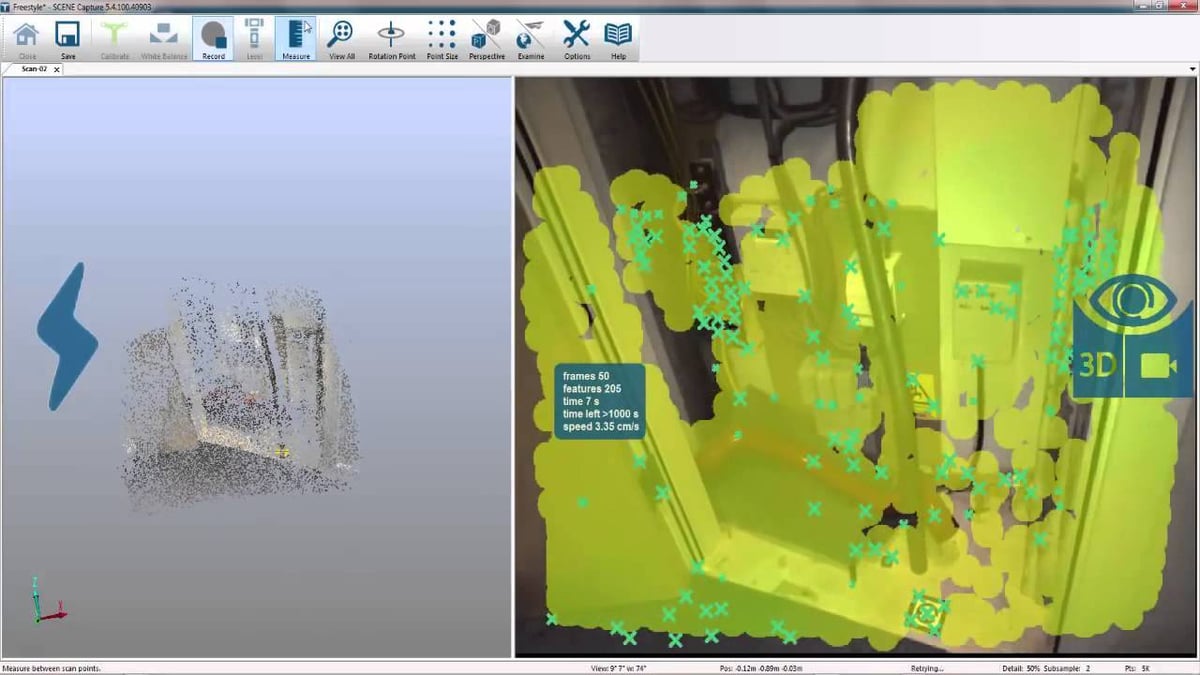
Scene Capture from Faro started back in 2013 as Scenect, indicating its roots in the Kinect scene. Since then, Faro, heavy into 3D measurement and scanning, has added support for many other scanning cameras. They offer a free license with no limit to the size of the scan (except your disk space). And when we say no limit, we mean it – Faro even did some 3D mapping with a Kinect mounted to the front of a car, collecting over 60 million data points. The name change to Scene Capture takes on a whole new meaning, as you see entire workshops being scanned with this software.
The workflow is a bit more cumbersome than other solutions, but it works well. It has a “live tracking” mode, as most software does, but it also offers a mode that imports a video and computes a 3D model. The software also has very good post-processing tools that can remove stray points, fix issues, and adjust color.
Support from Faro is quite good, but most of the community support and tutorials are from 2013-2015. We aren’t sure who is still using the Kinect with Scene Capture, but this software is very powerful, so it’s worth a try. Just watch out for the very high hardware requirements.
- Scan quality: Very good
- Ease of use: Okay
- Cost: Free
- Support: Good
- Computer requirements: High
- Kinect versions supported: v1, v2
KinectFusion

The last program we’ll talk about is KinectFusion. While KinectFusion, at one point, supported the Kinects v1 and v2, it now only works with the Azure Kinect, which is also the only Kinect supported by Microsoft after they canceled support for the others.
The program uses the GPU in your computer to provide a graphical visualization of scanned models taken by the Azure. Specifically, KinectFusion is meant to take indoor scans of specific objects (as opposed to scenes). What’s particularly great about KinectFusion is that it works for other scanning devices, too (just not the other Kinects), with the project page stating that you can use “low-budget scanners”.
The scanning performance of KinectFusion is pretty good, and you can make some decently accurate point cloud structures using this program with an Azure, which is also pretty accurate (because it uses good sensors). That said, to actually connect the two, you’ll have to do some special configuration using KinectFusion’s SDK. Nevertheless, it’s been proven to be possible!
- Scan quality: Decent
- Ease of use: Advanced
- Cost: Free
- Support: Good
- Computer requirements: Low
- Kinect version supported: Azure (utilizing the SDK)
License: The text of "The Best Kinect 3D Scanner Software" by All3DP is licensed under a Creative Commons Attribution 4.0 International License.
